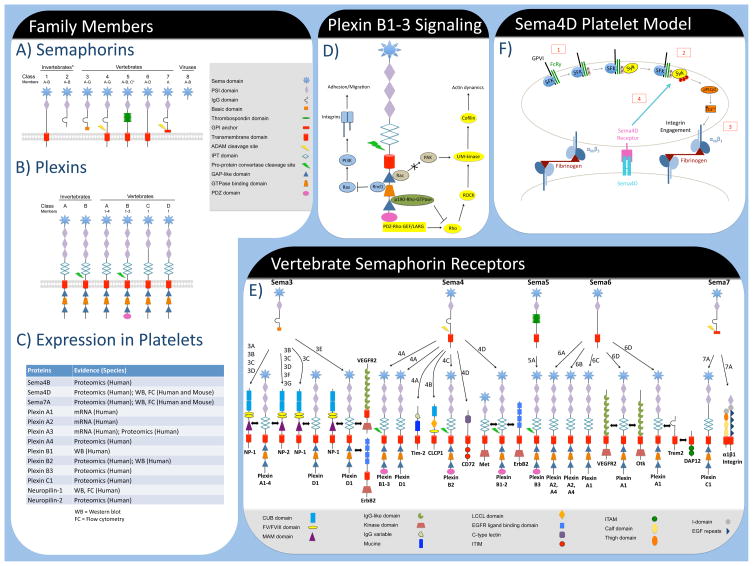Figure 1.
Schematic of Semaphorin (A) and Plexin (B) family members. (C) Several Semaphorins and Plexin family members have been reported to be expressed in platelets using a variety of techniques. (D) Plexins can regulate cellular actin dynamics by sequestering active Rac, thereby preventing activation of PAK and subsequent downstream effectors. Alternatively, Plexins can bind p190-Rho-GTPase to inhibit Rho activation. Conversely, Plexin B members can increase Rho activation through PDZ-RHO-GEF/LARG. In addition, Plexins can inactivate R-Ras through direct binding of the GTPase Rnd1 leading to effects on integrin-mediated cell adhesion and migration. (E) Schematic of vertebrate Semaphorin (Class 3–7) receptors. (F) Proposed model of Sema4D contributions to GPVI signaling [4]. Clustering of GPVI results in Src family kinase (SFK)-mediated phosphorylation of FcRγ(1) leading to the recruitment and phosphorylation of the tyrosine kinase, Syk (2). Subsequent signaling leads to PLCγ2-dependent intracellular Ca2+ release and integrin activation (3) leading to the formation of stable contacts between platelets which allows Sema4D to binds its receptor on an adjacent platelet and provide positive feedback to enhance Syk phosphorylation (4).

